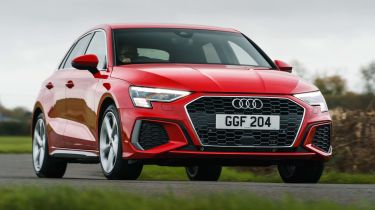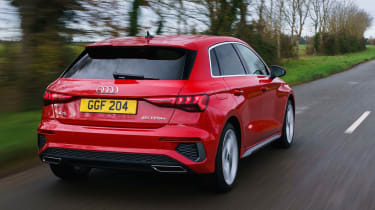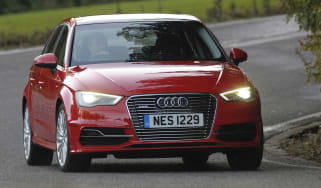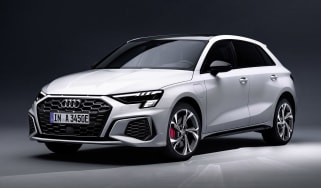Audi A3 hybrid review
The Audi A3 TFSI e has a sought-after badge, a top-notch interior and low company-car tax, but it's not the best value or most practical plug-in hatchback you can buy

Pros
- Decent electric range
- Smooth petrol-electric transition
- Superb interior quality and design
Cons
- Reduced boot space
- Ride comfort could be better
- Skoda & SEAT equivalents better value
| Model | Electric range | Fuel economy | CO2 emissions |
|---|---|---|---|
| 40 TFSI e | 40 miles | 283mpg | 25g/km |
| 45 TFSI e | 37 miles | 235mpg | 29g/km |
Compared to German rivals BMW and Mercedes, Audi was a little late to embrace plug-in hybrid (PHEV) technology. It still doesn't offer an electrified version of the A4 saloon and estate, but almost every other Audi is now offered as a PHEV, from the A6, A7 and A8 executive cars to the Q3, Q5, Q7 and Q8 SUVs.
You can also get a 'TFSI e' plug-in hybrid version of the A3 Sportback (although not its four-door saloon equivalent). This car shares much under the metal with the VW Golf, Skoda Octavia and SEAT Leon, so unsurprisingly it gets the same petrol-electric drivetrains they do. Audi calls them '40 TFSI e' and '45 TFSI e' – the latter is offered in Sport and S line trim, while the latter is exclusive to the S line Competition model.
With 201bhp on tap, the 40 TFSI e is equivalent to the Volkswagen Golf eHybrid, SEAT Leon e-Hybrid and Skoda Octavia iV, while the 45 TFSI e has the same 242bhp power output as the Volkswagen Golf GTE, Cupra Leon e-Hybrid and Skoda Octavia vRS iV hot hatchbacks.
The A3's electric motor is integrated with the car's six-speed dual-clutch automatic gearbox. Unlike some of the higher-end Audi hybrids, the plug-in A3 is front-wheel drive, with no option to add the brand's quattro all-wheel-drive system.
A 13kWh battery stores enough energy for up to 40 miles of pure-electric driving in the Sport trim level, which has 17-inch wheels; the S line versions have larger alloys that bring the number down to 37 miles. Like most plug-in hybrids, there's no rapid-charging capability; it's expected most owners will top up at home overnight from a wallbox, something that should take less than five hours to complete.
That electric range, combined with official CO2 emissions of 25 to 29g/km, are key to the A3 hybrid's appeal to company-car user-choosers. Previously, such buyers would have gone for the most frugal diesel engine in the range, but current Benefit-in-Kind (BiK) rates are stacked heavily in favour of plug-ins. The A3 compares well with its primary rival, the Mercedes A 250 e, here – although you need to stick to the 17-inch alloy wheels of the 40 TFSI e Sport model to get into the 8% BiK band; otherwise it's 12%.
For private buyers, the financial case for buying a plug-in hybrid is less clear-cut: while there are definite fuel-costs savings to be made if you mostly do short journeys that can be completed on electric power alone, that has to be stacked against a higher list price than an equivalent petrol or diesel A3 in the first place.
The A3 also isn't as smooth-riding, or practical, as some of its Volkswagen Group stablemates, the aforementioned Leon, Golf and Octavia (all of which are available in spacious estate form, too). But it does have a nicer-looking and better-quality interior, plus the kudos of that four-ring badge on the nose. For a more detailed look at the Audi A3 hybrid, read on for the rest of our in-depth review…






